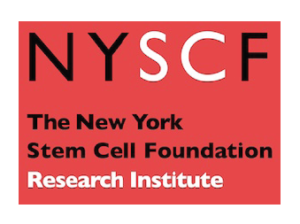
The New York Stem Cell Foundation (NYSCF) and Beyond Batten Disease Foundation (BBDF) today announce the availability of a unique and comprehensive collection of juvenile Batten (CLN3) disease induced pluripotent stem (iPS) cells. The two organizations partnered to develop this resource for scientists around the world. The collection is a key example of BBDF’s strategy to advance therapy development for Batten disease by creating and disseminating cutting-edge tools and other resources with game-changing potential.
The collection comprises stem cell lines from 24 individuals including affected patients and family members. Included are stem cell lines from patients matched with cell lines from both parents and other family members. The collection is currently being expanded and eventually will include more patient lines, isogenic controls, and parental carriers. The collection is available for academic researchers focused on the root cause of neurodegeneration in Batten and related illnesses as well as industry experts for screening libraries of promising compounds to treat disease. Other diseases that display alterations in the CLN3 gene and whose treatments could be advanced by using this collection include frontotemporal dementia, Parkinson’s disease, inherited blindness and certain cancers.
“This partnership resulted in the largest ever collection of stem cell models of juvenile Batten disease, giving researchers around the world an unprecedented opportunity to study how the disease develops, speeding research towards a cure,” said Susan L. Solomon, NYSCF Chief Executive Officer.
NYSCF scientists created the collection from skin samples (fibroblast cells) using the NYSCF Global Stem Cell ArrayTM, an automated robotic technology that standardizes and scales stem cell production and differentiation, enabling the manufacture and analysis of large numbers of identical cells. More information can be found about the Array at http://www.nyscf.org/array/.
“Thus far, efforts to study juvenile Batten disease have used rodent models or human skin cells, neither of which accurately mimic the disease in the brain, leaving researchers without a solid platform for testing drugs that prevent, halt, or reverse its progression,” said Danielle M. Kerkovich, Ph.D., BBDF Principal Scientist.
For a list of stem cell lines available and information on acquiring the cell lines, visit http://www.nyscf.org/repository. Additional lines are in development, including isogenic controls of currently available lines and genetically-engineered mutants. These will be made available on an ongoing basis when completed.
Over 40 different errors (mutations) in the CLN3 gene have been attributed to juvenile Batten disease. Initial symptoms typically begin with progressive vision loss, followed by personality changes, behavioral problems, and slowed learning. These symptoms are followed by seizures and loss of motor functions, eventually resulting in wheelchair use and premature death. Psychiatric symptoms can develop at any point during the disease.
###
About Beyond Batten Disease Foundation
Beyond Batten Disease Foundation (BBDF) is the world’s largest nonprofit organization dedicated to funding research for a treatment and cure for juvenile (CLN3) Batten disease. Since its inception in 2008, over $16 million has been invested in research by leveraging donations, co-funding and strategic partnerships. BBDF is spearheading a unique, cohesive strategy, incorporating independent scientific resources and collaboration with related organizations to drive research in juvenile Batten Disease. Today there is a treatment in sight. BBDF funded research has discovered a drug that slows the progression of the disease in Batten models. The foundation has launched a 24 month $6 million campaign to advance the treatment to clinical trials. More information can be found at http://www.
About The New York Stem Cell Foundation
The New York Stem Cell Foundation (NYSCF) Research Institute is an independent organization accelerating cures and better treatments for patients through stem cell research. The NYSCF global community includes over 150 researchers at leading institutions worldwide, including the NYSCF – Druckenmiller Fellows, the NYSCF – Robertson Investigators, the NYSCF – Robertson Stem Cell Prize Recipients, and NYSCF Research Institute scientists and engineers. The NYSCF Research Institute is an acknowledged world leader in stem cell research and in developing pioneering stem cell technologies, including the NYSCF Global Stem Cell ArrayTM and in manufacturing stem cells for scientists around the globe. NYSCF focuses on translational research in a model designed to overcome the barriers that slow discovery and replace silos with collaboration. For more information, visit http://www.nyscf.org.
